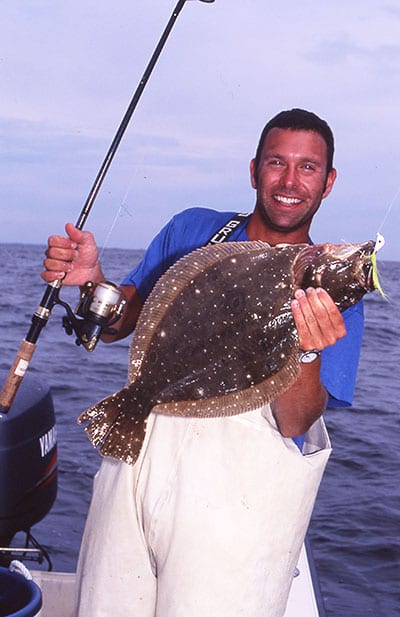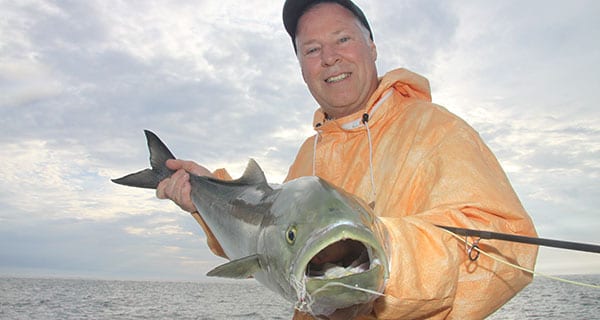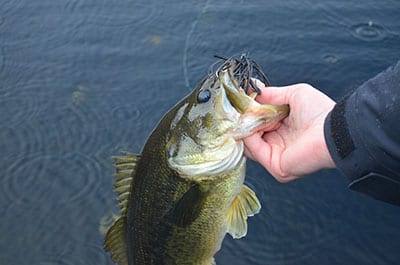It’s been 30 years or so, but I can still remember the big smile spread across my buddy Bill’s face as he lifted aboard a fat, 2-pound winter flounder from the waters of Long Island’s Great South Bay. This was a flattie to be proud of, a real broad fish that had required several pieces of bait before it would commit.
Now, as he held the fish aloft for inspection of all aboard, he loudly proclaimed victory. But the battle was just beginning. As the fish slowly twisted in the gusty wind, it proved difficult to grasp. Then, with a sudden shake and shimmer the big blackback managed to slide off the hook, free fall to the port seat, slither off across the cooler top and into an inch of scuzzy water beneath the transom.
Startled and dismayed at the sudden turn of events, Bill dropped his rod and reel to the floor and skidded off in hot pursuit. After much commotion and a few choice words, he came up with the flattie and held it aloft again with the fingers of both hands squeezing tightly across the fish’s face between its eyes and lips.
“There’s no escape for you my slithering, slimy friend,” he taunted, “you’re headed for the cooler!”
Well, maybe not. Another shimmy and the fish was again on the fly. This time it bounced off the back of the seat and landed belly-up on the port gunwale. For the longest second it remained motionless as the angler made one last awkward attempt to corral his would-be dinner. With a flip of the tail at the very last second, however, the flattie was gone. I swear I heard it chuckle as it slid back over the side.
Turns out sometimes getting the fish in the boat is only half the battle. You still need to wrestle it free from the hook and convince it to enter the cooler or quietly depart to fight again another day. This might not be so tough were it not for the simple truth that some captives simply don’t believe in capitulation – and many fish seem somehow able to sense the indecision of a novice angler who isn’t quite sure how to get a hold of things.
While there are no sure-fire routes to getting a firm grip on every fish you hoist aboard, there are a few basic grips that work well with particular fish body types and characteristics. Following is a brief look at a few holds that should serve you well with small- to mid-sized inshore and freshwater species. Keep in mind that any fish you intend to release will do best if handled gently but firmly and as little as possible. The less contact you have with it, the better. Wet your hands before handling any fish, shun the use of rags as they can remove a fish’s protective slime, and avoiding placing any catch you plan to release on the deck, the bank or in the sand. Lastly, consider purchasing a mechanical fish gripper or Boga Grip. These are inexpensive and work for most fish species, toothy or not.
Consider the following a very basic primer on how to keep your fish under control. In a future issue, we’ll cover the particulars of proper catch and release techniques.
The Lip Grip
This grip is great for calming many soft-mouthed species lacking in dentures. Grasp the fish with your thumb pressing firmly on the inside its lower lip and your index finger, or several fingers, pressing up into the pocket under the lip. Now bend the lip downward as you lift the fish straight up. For larger fish, use your free hand to support the belly area as you lift. Most toothless fish are immediately calmed by this grasp.
This grip works great with largemouth bass, stripers, sea bass, crappies and even sea robins. Always check to see if an unfamiliar fish has teeth before using this grip. If any are visible, choose another grip.

Over The Shoulder Grip
Great for controlling toothy species or those possessing a small mouth, this hold is similar to grabbing someone across the back of the neck. Position your hand behind the head and firmly grasp down with your thumb and fingers at a point near the top back of the gill plates. There is an area here where you can actually feel the plates depress. Squeeze firmly, being careful not to crush any fish that you plan to release.
This grip works well with weakfish, sea trout, sea bass, blackfish, porgies, cocktail blues, perch, larger trout, pickerel, walleye and pike, among others. For fish with bony projections around the gill plates, such as sea robins and some species of catfish, be sure to position your fingers over the front of the spikes so you cannot be pricked. The same goes for handling fish with sharp dorsal spines like scup, bluegill and pumpkinseed sunfish.

The Flatfish Grip
Due to their unusual body shape fluke are difficult for novice anglers to control. They can, however, be easily tamed with this simple grip. With the fish laying dark side up and head pointed away from you, use your right hand to grasp it right behind the gills. Your thumb should be on the dark side and your remaining fingers on the light side. Squeeze tight to compress the gill flaps at their base as in the over the shoulder hold.
Flounder and fluke are mirror images from a body shape perspective, so the grip is reversed for winter flatties. For flounder, grasp with your left hand. For fluke, grasp with your right. Your grasping hand should always come across from the dorsal side (whichever side of the mouth the eyes are on.)

The Layout
A gentle grip well suited to taming small to mid-sized trout, this grip seems to have a calming effect on panfish, school bass and schoolie weaks, too. With panfish, however, be careful to position your front hand so that it will not be pierced by the sharp rays of the dorsal fin. Cup your hand around the fish’s head or forward body with just enough pressure to keep the fish calm. Grasp the tail with your free hand for balance and added control if needed.
The Tail Grasp
Use this grip to handle larger bluefish, false albacore or any species which simply refuses to allow you to get a solid grip around the head area.

Grasp as tightly as possible immediately ahead of the tail and lift straight up. Continue holding the fish with its head down until it gives up the struggle. For toothy predators like blues and northern pike, keep the head far enough away from your body to avoid being bitten. You can combine this grip with the over the shoulder grip, or use your free hand to support a fish’s body from below while keeping its head pointed away.










